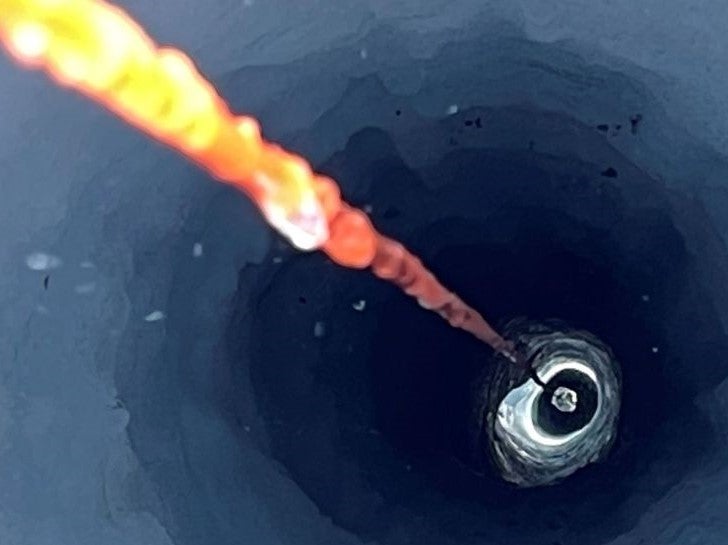‘A hidden world’: Researchers discover new ecosystem deep beneath Antarctica
New Zealand scientists were investigating what role underground estuary might be playing in melting ice shelves when cameras were swarmed by shrimp-like creatures

A never-before-seen ecosystem has been discovered in an underground river beneath Antarctica, scientists have said.
The “hidden world” – home to swarms of shrimp-like creatures – was found in a vast cathedral-like cavern under the Ross Ice Shelf, a floating sheet of ice attached to the eastern coast of the continent.
Researchers were there investigating what role the underground estuary might be playing as the ice shelves melt due to the climate crisis.
But, when they drilled into the ice, their camera was crowded with amphipods, small creatures from the same lineage as lobsters and crabs.
“We thought something was wrong with the camera, but when the focus improved, we noticed a swarm of arthropods around 5mm in size,” said Craig Stevens, from New Zealand’s National Institute of Water and Atmospherics which was carrying out the research. “We’ve done experiments in other parts of the ice shelf and thought we had a handle on things, but this time big surprises were thrown up.
“We were jumping up and down because having all those animals swimming around our equipment means that there’s clearly an important ecosystem there.”
The project’s lead, Huw Horgan from Te Herenga Waka Victoria University of Wellington, was the first to spot the estuary, after noticing a groove in the ice while studying satellite imagery of the ice shelf.
Researchers have been aware of a network of hidden freshwater lakes and rivers below the Antarctic ice sheets for some time but they have yet to be directly surveyed, Mr Horgan said.
“Getting to observe and sample this river was like being the first to enter a hidden world,” he added.
Instruments had been left in the river to observe its behaviour, he said, while lab researchers would investigate what makes the water unique. The team’s findings extended further too.
It had just deployed its mooring a few days before the eruption of Tongan volcano Hunga Tonga-Hunga Ha’apai. The team’s instruments detected a significant pressure change as the tsunami made its way through the cavity.
Seeing the eruption’s effects reminded Mr Stevens just how connected the planet is. “Here we are, in a forgotten corner of the world, seeing real-time influences from events that felt worlds away. It was quite remarkable,” he said.
Join our commenting forum
Join thought-provoking conversations, follow other Independent readers and see their replies
Comments
Bookmark popover
Removed from bookmarks